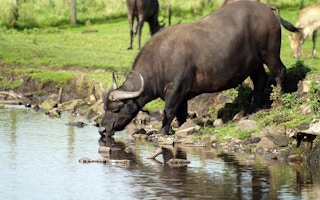Thirteen conservation organisations have banded together to ask policymakers to protect the world’s last wilderness areas by setting aside nearly one-third of the Earth for conservation.
“The planet is losing wildlife and wild places at an unprecedented rate,” Greg Zimmerman, communications director for the Wyss Campaign for Nature, said in a statement.
In a statement released Jan. 31, the Wyss Campaign and 12 other conservation groups, including WWF, BirdLife International and the Wildlife Conservation Society, said humanity’s future was tied to that of Earth’s wild places and urged world leaders to enact and fund policies that support wilderness conservation.
Recent research has demonstrated that less than one-quarter of the world’s terrestrial wilderness remains, and only 13 per cent of the world’s oceans remain wild. Scientists warn that protecting the last intact ecosystems on Earth is vital to preserving the buffer from climate change, the regulation of our water supply, and the critical biodiversity habitat that they provide.
Negotiators met Jan. 28-31 in Nagoya, Japan, to formulate a plan for protecting 30 per cent of the Earth’s surface and oceans by 2030, which will be finalised at the 2020 meeting of the Convention on Biological Diversity (CBD), an international agreement for nature conservation, in Beijing.
The discussions in Japan, Zimmerman said, were “an opportunity for nations to get off to a fast start toward a bold new global agreement in 2020.”
“
Developing this new, more ambitious plan to protect biodiversity is essential to the health and well-being of every person on every continent.
Greg Zimmerman, communications director, Wyss Campaign for Nature
The Wyss Campaign, named for its founder, Hansjörg Wyss, is investing $1 billion to help local communities and countries reach the 30 per cent goal. Under the CBD, the plan will extend to 2050 with a “new deal for people and nature.” To succeed, the effort must “integrate seamlessly” with both the Paris climate accord and the United Nations Sustainable Development Goals, according to the statement.
It calls for the prominent inclusion of indigenous communities securing wilderness areas, as well as straightforward, measurable targets to guide the project’s work. The goal, the statement’s authors write, is to stop the extinction and decline of species and the loss of ecosystems.
“Developing this new, more ambitious plan to protect biodiversity is essential to the health and well-being of every person on every continent,” Zimmerman said.
“Over the next two years, world leaders have an opportunity to chart a new path for our Earth’s remaining wild places by … dedicating sufficient funding to effectively manage protected areas.”
This story was published with permission from Mongabay.com.










